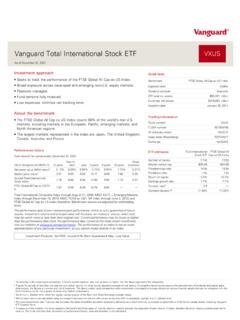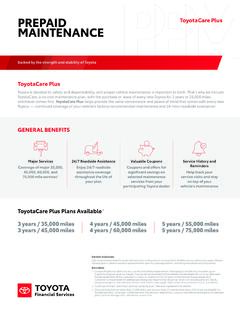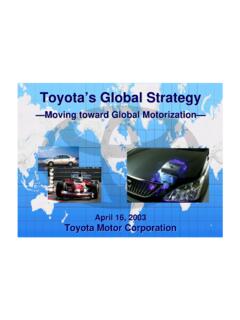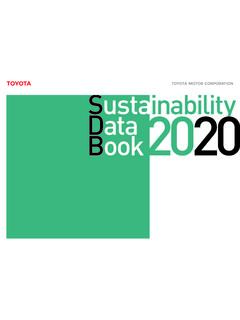Transcription of Going lean in the NHS
1 Going lean in the NHSG oing lean in the NHSHow lean thinkingwill enable the NHSto get more out of the same resourcesAn introductory guide for healthcare organisations seeking to: improve quality and efficiency improve patient care and experience improve safety and reduce mortality reduce length of stay reduce waste lower costs eliminate delays improve staff morale1 Lean thinkingfor better, safer healthcare with no delaysFive principles of lean to maximise customer value by eliminating waste ..5 Who is a customer? ..5 Principle 1: Specify 's valued / not valued by patients and carers?
2 6 Principle 2:Identify the value stream or patient stream mapping enables staff to see waste ..7 Designing a better way of working without waste and patients ..8 Action plan ..8 Make someone responsible for the whole patient journey ..8 Principle 3:Make the process and value A&E ..10 value stream maps to help expose the waste ..10 Case study: Hereford Hospitals NHS Trust endoscopy unit ..11 Simple tools for better and safer working the lab before and after a 5 Sactivity ..13 Standardising processes and the steps within them.
3 14 Principle 4:Let the customer the whole patient journey to improve care ..16 Exploiting the pull rather than the push ..16 Principle 5:Pursue people recognise when things are Going wrong ..17 Overview of lean implementation and its study: Bolton Hospitals - Better quality plus waste reduction, in days not months ..18 Critical success 20 Case study: Rapid improvement event at Mayday Healthcare NHS Trust sterile services ..21If you're excited about the benefits of lean thinking, here are some points to thinking is increasingly being applied to health services in the UK and overseas to.
4 Improve the quality of patient care improve safety eliminate delays reduce length of staywhile using no more resourcesSome healthcare organisations in the UK are already obtaining real benefits by the adoption of this guide includes NHS case studies showing the principles and benefits thinking, developed from the ToyotaProduction System, has been applied inmany competitive sectors. Tesco, forexample, is one of the biggest and mostsuccessful lean companies in the thinking identifies the least wasteful way to provide better,safer healthcare to your patients with no s about being able to do more with the resources principles of lean thinking enhance the quality of healthcareby improving flow in the patient journey and eliminating waste.
5 1 Specify value2 Identify thevalue stream orpatient journey3 Make theprocess andvalue flow4 Let thecustomer pull 5 Pursueperfection4 Principles1 Specify valueThis can only be defined by the is any activity which improves the patient's health, well being and the value stream or patient journeyThis is the core set of actions required to deliver value for the process and value flowAlign healthcare processes to facilitate the smooth flow of patients and the customer pullThe customer should begin to pull products or services as should deliver care on demand.
6 With the resources needed for perfectionDevelop and amend processes continuously in pursuit of the for healthcareIn healthcare we need to identify and agree what value we provideto that improves patient care and experience is addingvalue, anything else is waste, eg: less waiting and delay better outcomes fewer adverse incidentsWe also need to identify who our customers are. An obviouscustomer is the patient, however, other customers do exist andneed to be covers the whole patient journey from start to which steps add value and improve quality for the a patient this means: avoiding queuing and batching avoiding multiple referrals removal of all obstacles which prevent the quickest safestpractical flow of careWe need to create pull in the patient journey.
7 Every step in thepatient journey needs to pull people, skills, materials and informationtowards it, one at a time, when means responding to demand, rather than handing off patientsand pushing them from one department or ward to example: A ward phoning for the next patient rather thanwaiting for the the patient this means completing their care and treatment with the best outcome with no mistakes on time without delayTo achieve this we need consistent and reliable processesHow to maximise customer value by eliminating as muchwaste as possible from patient care and NHS servicesWaste is anything other than the minimum amount of equipment, space, staff time, which are essentialto add value to the product or (Defects)
8 WaitingTransportationOverprocessingInven toryMotionOverproductionDescriptionRewor k due to faulty processesRepeating things because correct informationwas not provided in the first placePeople unable to process their workbecause they are waiting for people,equipment or informationMoving materials unnecessarilyPerforming unnecessary processing stepsthat do not add valueToo much work in progress or stockInformation or patients waiting in a queueUnnecessary people motions, travel,walking and searchingThings not within reachThings not easily accessibleProducing more than is needed, or earlierthan needed by the next processHealth service examples readmission because of failed discharge adverse drug reactions repeating tests because correct information was not provided waiting for.
9 Patients theatre staff results, prescriptions and medicines doctors to discharge patients staff walking to the other end of a ward to pick up notes central equipment stores for commonly used items insteadof items located where they are used duplication of information asking for patients details several times repeated clerking of patients excess stock in storerooms that is not being used patients waiting to be discharged waiting lists unnecessary staff movement looking for paperwork, eg drug sheets not put back in the correct place storing syringes and needles at opposite ends of the room not having basic equipment in every examination room requesting unnecessary tests from pathology keeping investigation slots 'just in case'We identify and eliminate these various kinds of waste by applyingthe five principles, as described on the following is a customer?
10 An obvious customer in healthcare is the patient. However, other customers exist. A customer issomeone who uses something that is made or provided by a previous process step. For example, a ward or the staff ona ward are customers of patients and information they receive from the Accident and Emergency a lean perspective there are seven types of waste:Principle 1:Specify valueFor exampleValued by patients and carersExperiencing no delaysHigh standards and good serviceNot catching infections while inhospitalBeing treated in the right place atthe right time by the right personNot valued by patients and carersHaving to waitHaving their time wastedProcesses which delay recovery, eg.


















